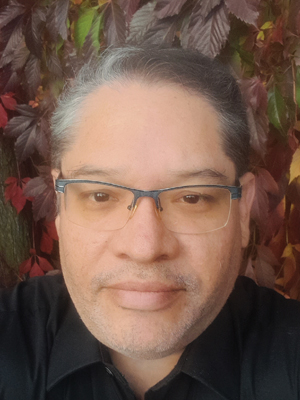Member Spotlight: Meet Edgar Acosta
Member Spotlight is a regular INFORM magazine column that features members who play critical roles in AOCS.

For this month’s issue of INFORM, we interviewed a long-time AOCS member and seasoned Surfactants and Detergents Division leader, Edgar Acosta, to tell us about his research and involvement with AOCS.
Edgar Acosta received his BS in Chemical Engineering, summa cum laude, from the Universidad del Zulia, in Maracaibo, Venezuela, and his MS and PhD in Chemical Engineering from the University of Oklahoma, in Norman Oklahoma, USA. He is currently a professor in the Department of Chemical Engineering and Applied Chemistry of the University of Toronto, Canada.
He has served in nine volunteer positions within AOCS since 2007 and is currently serving on the Journal of Surfactants and Detergents editorial board. His research encompasses the areas of colloids, complex fluids, and formulation engineering.
How long have you been a member of AOCS and why did you join? How did you find out about AOCS?
I believe I have been an AOCS member since 2002. I was encouraged by David Sabatini and John Scamehorn of the University of Oklahoma to join the Society. I was told that the AOCS was a community of industrial and academic colleagues that were very supportive of academic research in surfactant science.
The AOCS came as advertised and more. I have had the pleasure of interacting with excellent industry and academic peers who have shaped my own path.
What volunteer roles have you served, and what have you learned or contributed through these positions?
After graduate school, I started co-chairing various sessions. Later, I became a member of the Surfactants and Detergents (S&D) Division Executive Steering Committee. I started working with the awards program; then I worked to organize the S&D meeting program; and eventually, I became chair of the S&D division.
I worked with a wonderful team. So many names of industrial and academic colleagues that helped me learn how to serve the community. You know who you are, thank you.
What has been the most valuable contribution to your work from your involvement in AOCS?
I recall one meeting in Quebec City a few years ago that led to the first edition of the biosurfactant book. I had the chance to contribute one chapter on phospholipids which helped me advance one core research area on lecithin-based formulations. This work led one of my students, Mehdi Nouraei, to start a pharmaceutical company, called Micellae Delivery Systems.
Another example is the interaction with Charles Hammond (whom I met through the AOCS and the Journal of Surfactants and Detergents) that led to various research collaborations. This long-term collaboration introduced me to other excellent researchers, including Sanja Natali who has played a key role in exposing the industry to the potential benefits of the HLD-NAC framework.
Please explain in non-expert lay terms the potential contributions of HLD-NAC and the current usage.
Consider the ideal gas law, PV=nRT. If we know the temperature (T) and the pressure (P) of a gas, we can find the molar volume (V/n = RT/P) of the gas. It is a property of the gas. With this equation one can calculate many other properties that are essential to understand physical processes, from the air intake in a combustion engine to weather patterns.
In a similar way, the HLD-NAC uses basic information, such as the chemical structure of the surfactant and the oil, the temperature, the pressure (in some cases), and the electrolyte composition of the aqueous phase to generate properties such as the oil solubilization capacity in micelles.
Solubilization, interfacial tension, and other HLD-NAC generated properties help us design formulations for environmental remediation, enhanced oil recovery, drug delivery, and nanomaterial synthesis, among others.
Can you provide a brief description of your upcoming book? For which audiences would the book be of interest?
The book, “Surfactant Formulation Engineering using HLD and NAC,” is a team effort with Sabatini and Jeffery Harwell as co-editors, and several contributed chapters from industry and academia. The book has two sections: one for HLD, one for NAC. The first two chapters of the HLD section introduce the HLD equations and their parameters.
The next chapters present examples from industry and academia on the use of the HLD for detergency, vegetable oil extraction, latex formulations, emulsion formulations for agricultural applications, biodiesel formulations, and many others. The NAC section has an introductory chapter that explains the equations, along with the evolution of NAC, and a few examples. There are additional NAC application chapters in nanotechnology, separations, formulation of hard surface cleaners.
There is a chapter from Abbott on the use of Web Apps for HLD-NAC calculations, and a chapter from the group of Russell Johns on more accurate versions of the NAC. We close with a chapter on the Integrated Free Energy Model (IFEM), a parallel model to the HLD-NAC, but derived from the integration of molecular interactions.
We believe the book will serve the mavericks. The mavericks are those that would use the HLD concepts without a single calculation—they work with their intuition, now informed with the HLD and NAC. The scientists will use the equations and parameters to calculate a formulation space before conducting the experiments. The engineers would use the equations to predict product or process performance.
Editor’s note: The book “Surfactant Formulation Engineering using HLD and NAC” will be available November 1, 2023 through online booksellers.

